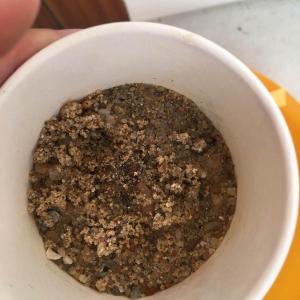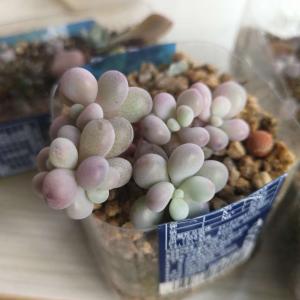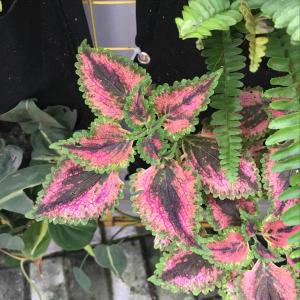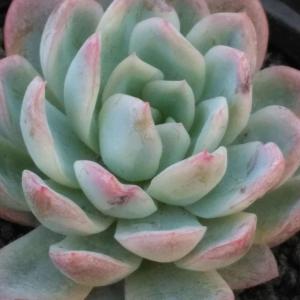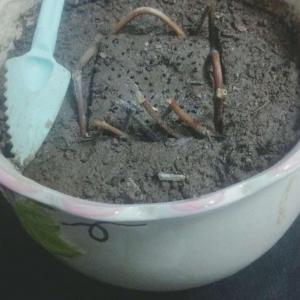文章
Miss Chen
2017年12月26日

Description: This perennial plant is 2-4' tall and unbranched, except for some flowering side stems near the apex. The central stem and side stems are covered with long white hairs. The opposite leaves are up to 8" long and 2" across, and light or yellowish green. Their bases surround the central stem and merge together (perfoliate). In shape, they are lanceolate with long narrow tips and serrate margins. There is a conspicuous network of veins, particularly on the lower leaf surface. This lower surface is also pubescent. Some of the upper leaves near the inflorescence(s) are much smaller in size and sessile. The upper stems terminate in clusters of white flowerheads, spanning about 2-8" across. Each flowerhead is about 1/6" (4 mm.) across and consists of about 15 disk florets. Each disk floret has 5 spreading lobes and a long divided style, in the manner of other Eupatorium spp. The blooming period is late summer to early fall, which typically lasts about 1-2 months for a colony of plants. There is a pleasant floral scent. The florets are replaced by achenes with small tufts of hair – they are dispersed by the wind. The root system is fibrous and produces rhizomes in abundance. Common Boneset typically forms vegetative colonies.
Cultivation: The preference is full or partial sun, and wet to moist conditions. The soil should contain considerable organic material so that it can retain moisture. This plant can withstand flooded conditions for short periods of time, but it is not really aquatic. The foliage appears to be little bothered by pests and disease.
Range & Habitat: The native Common Boneset has been reported from most counties of Illinois, and it is fairly common (see Distribution Map). However, this plant appears to be somewhat less common than either Eupatorium serotinum (Late Boneset) and Eupatorium altissimum (Tall Boneset). Habitats include openings in floodplain forests, poorly drained areas of black soil prairies, and various kinds of wetlands, including marshes, bogs, fens, seeps, edges of rivers, and sand flats along Lake Michigan. This plant also occurs in or near roadside ditches. Generally, it doesn't stray far from wetland areas of one kind or another.

Faunal Associations: The nectar or pollen of the flowers attracts many kinds of insects, including bees, flies, wasps, butterflies, and beetles. In particular, many kinds of unusual flies and wasps are attracted to the flowers because of the accessibility of the nectar. The caterpillars of various moth species are known to feed on various parts of Common Boneset, including Haploa clymene (Clymene Moth), Phragmatobia lineata (Lined Ruby Tiger Moth), Papaipema cataphracta (Burdock Borer Moth), Schinia trifascia (Three-Lined Flower Moth), Chlorochlamys chloroleucaria (Blackberry Looper Moth), and Semiothisa continuata (Geometrid Moth sp.). The small seeds appear to be of little interest to birds and other fauna, although they are occasionally eaten by the Swamp Sparrow. Mammalian herbivores display little interest in Common Boneset as a food source because of the bitterness of the foliage.

Photographic Location: The photographed plants were growing at the bottom of a drainage ditch amid horsetails near the Windsor Road Prairie in Champaign, Illinois. This portion of the drainage ditch does not have standing water during dry weather (i.e., a seasonal wetland).
Comments: Common Boneset has interesting foliage and fragrant flowers. It tolerates flooded conditions better than many other Boneset species. It can be distinghished from these other species by the perfoliate leaves that surround the central stem. The other species have opposite leaves that are sessile or have distinct petioles. All of these species have spreading clusters of white flowers with a similar appearance. These flowers are quite popular with diverse kinds of insects.
Cultivation: The preference is full or partial sun, and wet to moist conditions. The soil should contain considerable organic material so that it can retain moisture. This plant can withstand flooded conditions for short periods of time, but it is not really aquatic. The foliage appears to be little bothered by pests and disease.
Range & Habitat: The native Common Boneset has been reported from most counties of Illinois, and it is fairly common (see Distribution Map). However, this plant appears to be somewhat less common than either Eupatorium serotinum (Late Boneset) and Eupatorium altissimum (Tall Boneset). Habitats include openings in floodplain forests, poorly drained areas of black soil prairies, and various kinds of wetlands, including marshes, bogs, fens, seeps, edges of rivers, and sand flats along Lake Michigan. This plant also occurs in or near roadside ditches. Generally, it doesn't stray far from wetland areas of one kind or another.

Faunal Associations: The nectar or pollen of the flowers attracts many kinds of insects, including bees, flies, wasps, butterflies, and beetles. In particular, many kinds of unusual flies and wasps are attracted to the flowers because of the accessibility of the nectar. The caterpillars of various moth species are known to feed on various parts of Common Boneset, including Haploa clymene (Clymene Moth), Phragmatobia lineata (Lined Ruby Tiger Moth), Papaipema cataphracta (Burdock Borer Moth), Schinia trifascia (Three-Lined Flower Moth), Chlorochlamys chloroleucaria (Blackberry Looper Moth), and Semiothisa continuata (Geometrid Moth sp.). The small seeds appear to be of little interest to birds and other fauna, although they are occasionally eaten by the Swamp Sparrow. Mammalian herbivores display little interest in Common Boneset as a food source because of the bitterness of the foliage.

Photographic Location: The photographed plants were growing at the bottom of a drainage ditch amid horsetails near the Windsor Road Prairie in Champaign, Illinois. This portion of the drainage ditch does not have standing water during dry weather (i.e., a seasonal wetland).
Comments: Common Boneset has interesting foliage and fragrant flowers. It tolerates flooded conditions better than many other Boneset species. It can be distinghished from these other species by the perfoliate leaves that surround the central stem. The other species have opposite leaves that are sessile or have distinct petioles. All of these species have spreading clusters of white flowers with a similar appearance. These flowers are quite popular with diverse kinds of insects.
0
0
文章
Miss Chen
2017年12月26日

Description: This perennial plant is 3-4' tall and unbranched, except for the upper flowering stems. The stems are covered with white hairs. The opposite leaves are up to 5" long and 1" across, occasionally with small teeth along the margins. They are usually dark green, lanceolate to narrowly ovate, and pubescent. There are three conspicuous veins that run along the length of each leaf. The rather flat inflorescence consists of numerous heads of small white flowers and their buds. These flowers are dull white and individually only 1/8" (3 mm.) across. There is little or no floral scent. The blooming period occurs from late summer to early fall, and lasts about 1-1½ months. The achenes develop small tufts of white or light brown hair; they are dispersed by the wind. This plant may spread vegetatively through rhizomes.
Cultivation: The preference is full or partial sun, and mesic to dry conditions. The soil can contain significant amounts of loam, clay, or gravel; soil with a high pH is tolerated. Drought tolerance is good, although the plant may wilt. Tall Boneset is very easy to grow, and competes well against other plants. It is usually not affected by foliar disease.
Range & Habitat: The native Tall Boneset occurs in most of Illinois, except some southern counties (see Distribution Map). It is a common plant. Habitats include mesic to slightly dry black soil prairies, clay prairies, gravel prairies, savannas, thickets, openings in upland forests, dry banks of lakes, limestone glades, pastures and abandoned fields, fence rows, vacant lots, and areas along railroads. This plant favors disturbed areas, where it may form large colonies.

Faunal Associations: The nectar of the flowers attracts many kinds of insects, including long-tongued bees, short-tongued bees, wasps, flies, small butterflies, skippers, beetles, and plant bugs. Among these, wasps and flies are particularly common visitors. The wasp visitors include Paper wasps, Thread-Waisted wasps, bee wolves (Philanthus spp.), Scoliid wasps, Larrine wasps, Sand wasps, Spider wasps, and others. Fly visitors include Syrphid flies, bee flies, Tachinid flies, Muscid flies, and others. The caterpillars of several moths feed on various parts of Tall Boneset and closely related plants, including Haploa clymene (Clymene Moth), Phragmatobia lineata (Lined Ruby Tiger Moth), Carmenta bassiformis (Eupatorium Borer Moth; bores into roots), and Schinia trifascia (Three-Lined Flower Moth; eats flowers & seed capsules). Mammalian herbivores, including livestock, shun the bitter-tasting leaves of this plant; consequently, it tends to flourish in pastures.

Photographic Location: The photographs were taken at a flower garden along a sidewalk in Urbana, Illinois, and in a vacant lot near the same city.
Comments: Tall Boneset often competes directly with Solidago canadensis (Canada Goldenrod) in disturbed areas, although it prefers slightly drier areas. The two plants appear similar to each other prior to bloom, although the former has darker leaves. This plant provides some white color to a fall landscape that is often dominated by forbs with yellow flowers and the brown color of dried-out grasses. This is the easiest boneset to grow in dry sunny areas. Some people may mistake this plant for a weed, which it is to some extent.
Cultivation: The preference is full or partial sun, and mesic to dry conditions. The soil can contain significant amounts of loam, clay, or gravel; soil with a high pH is tolerated. Drought tolerance is good, although the plant may wilt. Tall Boneset is very easy to grow, and competes well against other plants. It is usually not affected by foliar disease.
Range & Habitat: The native Tall Boneset occurs in most of Illinois, except some southern counties (see Distribution Map). It is a common plant. Habitats include mesic to slightly dry black soil prairies, clay prairies, gravel prairies, savannas, thickets, openings in upland forests, dry banks of lakes, limestone glades, pastures and abandoned fields, fence rows, vacant lots, and areas along railroads. This plant favors disturbed areas, where it may form large colonies.

Faunal Associations: The nectar of the flowers attracts many kinds of insects, including long-tongued bees, short-tongued bees, wasps, flies, small butterflies, skippers, beetles, and plant bugs. Among these, wasps and flies are particularly common visitors. The wasp visitors include Paper wasps, Thread-Waisted wasps, bee wolves (Philanthus spp.), Scoliid wasps, Larrine wasps, Sand wasps, Spider wasps, and others. Fly visitors include Syrphid flies, bee flies, Tachinid flies, Muscid flies, and others. The caterpillars of several moths feed on various parts of Tall Boneset and closely related plants, including Haploa clymene (Clymene Moth), Phragmatobia lineata (Lined Ruby Tiger Moth), Carmenta bassiformis (Eupatorium Borer Moth; bores into roots), and Schinia trifascia (Three-Lined Flower Moth; eats flowers & seed capsules). Mammalian herbivores, including livestock, shun the bitter-tasting leaves of this plant; consequently, it tends to flourish in pastures.

Photographic Location: The photographs were taken at a flower garden along a sidewalk in Urbana, Illinois, and in a vacant lot near the same city.
Comments: Tall Boneset often competes directly with Solidago canadensis (Canada Goldenrod) in disturbed areas, although it prefers slightly drier areas. The two plants appear similar to each other prior to bloom, although the former has darker leaves. This plant provides some white color to a fall landscape that is often dominated by forbs with yellow flowers and the brown color of dried-out grasses. This is the easiest boneset to grow in dry sunny areas. Some people may mistake this plant for a weed, which it is to some extent.
0
0
文章
Miss Chen
2017年12月23日

Description: This herbaceous perennial plant is 2½–4' tall, branching sparingly. The stout central stem is round and covered with fine hooked hairs. The alternate compound leaves are trifoliate and have petioles about 1–2½" long. The leaflets are up to 3½" long and 1" across. A typical leaflet is lanceolate-oblong or lanceolate-ovate, with smooth margins, and a leathery texture. The base of a leaflet is rounded, while the tip is usually blunt. The lower surface is light or whitish green and has prominent veins; there are hooked hairs along the major veins. The central stem terminates in an elongated raceme of flowers about ½–1½' long. Usually, only a few flowers are in bloom at the same time.

Each flower is about 1/3" (8 mm.) in length (up and down), and either pale purple or white. The two upper petals are larger than the others and well-rounded; when these petals are pale purple, there is a small patch of white near the throat of the flower, which is surrounded by a narrow border of burgundy. There are also two side petals that enclose a lower petal, which project outward. Together, they form a typical pea-shaped flower. The hairy green calyx is divided into 5 lobes of unequal length, while the pedicels of the flowers are slender and hairy. The blooming period usually occurs during mid-summer and lasts about 3 weeks. There is no noticeable floral scent. The flowers are replaced by flat seedpods about 1-3" long that are called 'loments.' These loments have 3-9 segments that are well-rounded on both the upper and lower sides. The surface of these loments are covered with hooked hairs that can cling to clothing or fur. Individual segments of the loments can break off and cling to more than one passing carrier. The root system consists of a stout taproot. Vegetative colonies are not formed.
Cultivation: The preference is full or partial sun, mesic conditions, and a fertile loam or clay loam soil. This plant has good drought tolerance, and it appears to have fewer problems with powdery mildew than some other Desmodium spp., such as Desmodium canadense (Showy Tick Trefoil). If it is grown in full sun, Illinois Tick Trefoil remains quite erect because of its stout central stem. Its root system adds nitrogen to the soil.

Range & Habitat: The native Illinois Tick Trefoil occurs occasionally in most counties of central and northern Illinois, but it is uncommon or absent in many areas of southern Illinois (see Distribution Map). Habitats include mesic to slightly dry black soil prairies, sand prairies (less typical), oak savannas, scrubby barrens, and areas along railroads and roadsides, especially where prairie remnants occur. Usually, this species occurs as scattered plants, and doesn't form the dense colonies of some Desmodium spp., such as Showy Tick Trefoil.
Faunal Associations: The flowers attract long-tongued bees primarily, including bumblebees and leaf-cutting bees (Megachile spp.); only pollen is available as a floral reward. Other insect feed on the leaves, seeds, and other parts of Illinois Tick Trefoil and other tick trefoils (Desmodium spp.). These insects include the seed-eating larvae of Apion reconditum andTrifoliate Leaves other straight-snouted weevils; leaf-mining larvae of Pachyschelus laevigatus (a metallic wood-boring beetle); Colaspis brunnea (Grape Colaspis), Odontota horni (Soybean Leafminer), and other leaf beetles; larvae of Clinodiplosis meibomiifoliae and other gall flies; Aphis glycines (Soybean Aphid) and other aphids; the seed-eating Megalotomus quinquespinosus (Lupine Bug); leaf-eating larvae of Atomacera debilis (an Argid sawfly); flower- and bud-eating larvae of Grapholita fana (Chesire Cat Moth) and larvae of other moths; larvae of Thorybes bathyllus (Southern Cloudywing), Thorybes pylades (Northern Cloudywing), and other skippers; larvae of two butterflies, Everes comyntas (Eastern Tailed Blue) and Strymon melinus (Gray Hairstreak); and Neohydatothrips desmodianus (Tick Trefoil Thrips). The Insect Table provides a more complete list of these insects. Among vertebrate animals, the seeds of tick trefoils are eaten by the Bobwhite Quail, Wild Turkey, and White-footed Mouse (Martin et al., 1951/1961). The foliage is palatable to mammalian herbivores, including deer, rabbits, groundhogs, and livestock. These same animals help to distribute the seedpods, which cling to fur, spreading Illinois Tick Trefoil and other tick trefoils to new areas. People also help to distribute the seedpods because they readily cling to clothing.
Photographic Location: The photographs were taken at the Shortline Railroad Prairie in Champaign County, Illinois. The plants were growing in a mesic black soil prairie not far from a corn field.
Comments: Illinois Tick Trefoil is not very showy because only a few flowers are in bloom at the same time. Unlike other Desmodium spp. (Tick Trefoils), it has high fidelity to prairies, and is less often observed around woodlands. Illinois Tick Trefoil can be readily distinguished from Desmodium canadense (Showy Tick Trefoil), another species that often occurs in prairies, by considering the following features: 1) the former species usually has fewer flowers in bloom at the same time as the latter, 2) the compound leaves of the former have much longer petioles (over 1" long) than the latter, 3) the stipules at the base of the petioles of the former are larger, broader, and more persistant than the stipules of the latter, and 4) the undersides of the leaflets of the former have more prominent veins than the leaflets of the latter. In general, the form and number of segments in the loments are important in distinguishing the different species of Tick Trefoil, while their flowers are very similar in appearance. The loments of other Tick Trefoils usually have fewer segments than Illinois Tick Trefoil, and often the upper sides of their loments are more flat.

Each flower is about 1/3" (8 mm.) in length (up and down), and either pale purple or white. The two upper petals are larger than the others and well-rounded; when these petals are pale purple, there is a small patch of white near the throat of the flower, which is surrounded by a narrow border of burgundy. There are also two side petals that enclose a lower petal, which project outward. Together, they form a typical pea-shaped flower. The hairy green calyx is divided into 5 lobes of unequal length, while the pedicels of the flowers are slender and hairy. The blooming period usually occurs during mid-summer and lasts about 3 weeks. There is no noticeable floral scent. The flowers are replaced by flat seedpods about 1-3" long that are called 'loments.' These loments have 3-9 segments that are well-rounded on both the upper and lower sides. The surface of these loments are covered with hooked hairs that can cling to clothing or fur. Individual segments of the loments can break off and cling to more than one passing carrier. The root system consists of a stout taproot. Vegetative colonies are not formed.
Cultivation: The preference is full or partial sun, mesic conditions, and a fertile loam or clay loam soil. This plant has good drought tolerance, and it appears to have fewer problems with powdery mildew than some other Desmodium spp., such as Desmodium canadense (Showy Tick Trefoil). If it is grown in full sun, Illinois Tick Trefoil remains quite erect because of its stout central stem. Its root system adds nitrogen to the soil.

Range & Habitat: The native Illinois Tick Trefoil occurs occasionally in most counties of central and northern Illinois, but it is uncommon or absent in many areas of southern Illinois (see Distribution Map). Habitats include mesic to slightly dry black soil prairies, sand prairies (less typical), oak savannas, scrubby barrens, and areas along railroads and roadsides, especially where prairie remnants occur. Usually, this species occurs as scattered plants, and doesn't form the dense colonies of some Desmodium spp., such as Showy Tick Trefoil.
Faunal Associations: The flowers attract long-tongued bees primarily, including bumblebees and leaf-cutting bees (Megachile spp.); only pollen is available as a floral reward. Other insect feed on the leaves, seeds, and other parts of Illinois Tick Trefoil and other tick trefoils (Desmodium spp.). These insects include the seed-eating larvae of Apion reconditum andTrifoliate Leaves other straight-snouted weevils; leaf-mining larvae of Pachyschelus laevigatus (a metallic wood-boring beetle); Colaspis brunnea (Grape Colaspis), Odontota horni (Soybean Leafminer), and other leaf beetles; larvae of Clinodiplosis meibomiifoliae and other gall flies; Aphis glycines (Soybean Aphid) and other aphids; the seed-eating Megalotomus quinquespinosus (Lupine Bug); leaf-eating larvae of Atomacera debilis (an Argid sawfly); flower- and bud-eating larvae of Grapholita fana (Chesire Cat Moth) and larvae of other moths; larvae of Thorybes bathyllus (Southern Cloudywing), Thorybes pylades (Northern Cloudywing), and other skippers; larvae of two butterflies, Everes comyntas (Eastern Tailed Blue) and Strymon melinus (Gray Hairstreak); and Neohydatothrips desmodianus (Tick Trefoil Thrips). The Insect Table provides a more complete list of these insects. Among vertebrate animals, the seeds of tick trefoils are eaten by the Bobwhite Quail, Wild Turkey, and White-footed Mouse (Martin et al., 1951/1961). The foliage is palatable to mammalian herbivores, including deer, rabbits, groundhogs, and livestock. These same animals help to distribute the seedpods, which cling to fur, spreading Illinois Tick Trefoil and other tick trefoils to new areas. People also help to distribute the seedpods because they readily cling to clothing.
Photographic Location: The photographs were taken at the Shortline Railroad Prairie in Champaign County, Illinois. The plants were growing in a mesic black soil prairie not far from a corn field.
Comments: Illinois Tick Trefoil is not very showy because only a few flowers are in bloom at the same time. Unlike other Desmodium spp. (Tick Trefoils), it has high fidelity to prairies, and is less often observed around woodlands. Illinois Tick Trefoil can be readily distinguished from Desmodium canadense (Showy Tick Trefoil), another species that often occurs in prairies, by considering the following features: 1) the former species usually has fewer flowers in bloom at the same time as the latter, 2) the compound leaves of the former have much longer petioles (over 1" long) than the latter, 3) the stipules at the base of the petioles of the former are larger, broader, and more persistant than the stipules of the latter, and 4) the undersides of the leaflets of the former have more prominent veins than the leaflets of the latter. In general, the form and number of segments in the loments are important in distinguishing the different species of Tick Trefoil, while their flowers are very similar in appearance. The loments of other Tick Trefoils usually have fewer segments than Illinois Tick Trefoil, and often the upper sides of their loments are more flat.
0
0
文章
Miss Chen
2017年12月23日

Description: This is a herbaceous perennial plant about 2-4' tall that is either unbranched or sparingly so. The central stem is light green, grooved, and either glabrous or sparsely pubescent. The alternate compound leaves are bipinnate and up to 8" long; they have a ferny appearance. Each compound leaf has 8-12 pairs of even-pinnate leaflets; each even-pinnate leaflet consists of 20-40 pairs of closely spaced subleaflets. Individual subleaflets are about 1/8" (3 mm.) long and about one-third as much across; they are light to medium green, lanceolate-oblong in shape, ciliate along their margins, and sessile (or nearly so). The rachises (central stalks) of the compound leaves are whitish green from fine hairs and they are grooved along their upper sides.
Small white flowerheads occur individually from the axils of the upper leaves on slender peduncles up to 3" long. The peduncles are glabrous to sparsely hairy. Each flowerhead is up to ½" across and ovoid-globoid in shape; it consists of a dense head of 25-50 florets that are oriented in nearly all directions. Each floret consists of a short-campanulate calyx with 5 teeth (less than 1 mm. in length), 5 white petals (about 1 mm. in length), an ovary with a single style, and 5 strongly exerted stamens. The stamens have white filaments and pale yellow anthers. When they are fully developed, these flowerheads have a starburst appearance that is typical of compound flowers in the Mimosa family, but they appear more lumpy than spherical because the florets bloom from the bottom to the top gradually, rather than all at once. The blooming period lasts 1-2 months during the summer. There is no noticeable floral scent. Afterwards, the flowerheads are replaced by clusters of 5-15 seedpods that become dark brown at maturity. Individual seedpods are about ½" in length and two-valved; they are curved and flattened. Each seedpod splits open along its valves, releasing 2-5 seeds. The seeds are reddish brown, ovoid-reniform in shape, somewhat flattened, and shiny. This plant spreads by reseeding itself.

Cultivation: The preference is full to partial sun and moist to mesic conditions. Some drought is tolerated, but the leaflets on the lower stems of the plant may fall off, and the buds of compound flowers may abort and turn brown. Growth is best in fertile loam, but other kinds of soil are readily tolerated. This plant fixes nitrogen in the soil. Foliar disease is rarely a problem.
Range & Habitat: The native Illinois Bundleflower occurs primarily in NE Illinois, along the Illinois River valley in central Illinois, and along the Mississippi River valley in SW Illinois, favoring loamy or sandy alluvial soils. This plant is occasional in these areas, while in other areas of the state it is uncommon or absent (see Distribution Map). Habitats include black soil prairies, moist meadows near rivers, openings in woodlands, limestone glades, areas along railroads, and areas along levees. Because of the relatively high protein content of its foliage, Illinois Bundleflower has been planted in pastures to feed cattle, and it can be used in prairie restorations to improve worn-out soil. However, it recovers poorly from wildfires. Relatively open areas with a history of disturbance are preferred.

Faunal Associations: The flowerheads are occasionally visited by small bees and flies that seek nectar and pollen. The medium-sized seeds are consumed by various upland gamebirds, including the Ring-Necked Pheasant, Bobwhite Quail, and Greater Prairie Chicken. The foliage of this plant is highly palatable to mammalian herbivores because of its high protein content. It may have trouble surviving in areas where there is a surplus population of these animals and a shortage of predators.
Photographic Location: Photographs were taken at the webmaster's wildflower garden in Urbana, Illinois.

Comments: The primary attraction of Illinois Bundleflower is the refined appearance of its fern-like foliage. The subleaflets of the compound leaves fold together at night, and they close partially during hot sunny days in order to reduce moisture loss. During the morning and evening, when sunlight is less intense, the compound leaves orient themselves in the direction of the sun in order to maximize the reception of its light. The small white flowerheads are short-lived and not particularly showy. Illinois Bundleflower is one of two members of the Mimosa family that occur in prairies in Illinois. The other plant, Schrankia uncinata (Sensitive Brier), is a sprawling vine that has pink starburst flowerheads and prickles along its stems and compound leaves.
Small white flowerheads occur individually from the axils of the upper leaves on slender peduncles up to 3" long. The peduncles are glabrous to sparsely hairy. Each flowerhead is up to ½" across and ovoid-globoid in shape; it consists of a dense head of 25-50 florets that are oriented in nearly all directions. Each floret consists of a short-campanulate calyx with 5 teeth (less than 1 mm. in length), 5 white petals (about 1 mm. in length), an ovary with a single style, and 5 strongly exerted stamens. The stamens have white filaments and pale yellow anthers. When they are fully developed, these flowerheads have a starburst appearance that is typical of compound flowers in the Mimosa family, but they appear more lumpy than spherical because the florets bloom from the bottom to the top gradually, rather than all at once. The blooming period lasts 1-2 months during the summer. There is no noticeable floral scent. Afterwards, the flowerheads are replaced by clusters of 5-15 seedpods that become dark brown at maturity. Individual seedpods are about ½" in length and two-valved; they are curved and flattened. Each seedpod splits open along its valves, releasing 2-5 seeds. The seeds are reddish brown, ovoid-reniform in shape, somewhat flattened, and shiny. This plant spreads by reseeding itself.

Cultivation: The preference is full to partial sun and moist to mesic conditions. Some drought is tolerated, but the leaflets on the lower stems of the plant may fall off, and the buds of compound flowers may abort and turn brown. Growth is best in fertile loam, but other kinds of soil are readily tolerated. This plant fixes nitrogen in the soil. Foliar disease is rarely a problem.
Range & Habitat: The native Illinois Bundleflower occurs primarily in NE Illinois, along the Illinois River valley in central Illinois, and along the Mississippi River valley in SW Illinois, favoring loamy or sandy alluvial soils. This plant is occasional in these areas, while in other areas of the state it is uncommon or absent (see Distribution Map). Habitats include black soil prairies, moist meadows near rivers, openings in woodlands, limestone glades, areas along railroads, and areas along levees. Because of the relatively high protein content of its foliage, Illinois Bundleflower has been planted in pastures to feed cattle, and it can be used in prairie restorations to improve worn-out soil. However, it recovers poorly from wildfires. Relatively open areas with a history of disturbance are preferred.

Faunal Associations: The flowerheads are occasionally visited by small bees and flies that seek nectar and pollen. The medium-sized seeds are consumed by various upland gamebirds, including the Ring-Necked Pheasant, Bobwhite Quail, and Greater Prairie Chicken. The foliage of this plant is highly palatable to mammalian herbivores because of its high protein content. It may have trouble surviving in areas where there is a surplus population of these animals and a shortage of predators.
Photographic Location: Photographs were taken at the webmaster's wildflower garden in Urbana, Illinois.

Comments: The primary attraction of Illinois Bundleflower is the refined appearance of its fern-like foliage. The subleaflets of the compound leaves fold together at night, and they close partially during hot sunny days in order to reduce moisture loss. During the morning and evening, when sunlight is less intense, the compound leaves orient themselves in the direction of the sun in order to maximize the reception of its light. The small white flowerheads are short-lived and not particularly showy. Illinois Bundleflower is one of two members of the Mimosa family that occur in prairies in Illinois. The other plant, Schrankia uncinata (Sensitive Brier), is a sprawling vine that has pink starburst flowerheads and prickles along its stems and compound leaves.
0
0
文章
Miss Chen
2017年12月23日

Description: This perennial wildflower is 1½–3' tall, consisting of some basal leaves and a flowering stem with alternate leaves. The basal leaves are up to 4" long and 4" across; each basal leaf is palmately divided into 3-5 segments, and each of these segments are subdivided into linear lobes about 3-4 mm. across. The slender petioles of the basal leaves are up to 4" long. The alternate leaves are similar in appearance to the basal leaves, except they become smaller while ascending the stem and their petioles are shorter. The basal leaves, alternate leaves, and the petioles are finely pubescent and whitish green to green. The central stem is terete, short-pubescent, and whitish green; it is unbranched or sparingly branched where the floral racemes occur. The central stem terminates in an elongated raceme of flowers about ½–1' long; sometimes there are 1 or 2 lateral racemes that are shorter. Individual flowers are about 1" long and 1" across; depending on the local ecotype, they vary in color from light blue to deep blue-violet.
Each flower consists of 5 sepals, 4 petals, 3 pistils, and numerous stamens. The petal-like sepals spread outward and they have rounded tips; the base of the uppermost sepal forms the ascending nectar spur, which curves upward. Near the tip of each sepal, there is often a patch of green. The small upper petals form a short hood over the throat of the flower and their bases extend into the nectar spur; they are often more white or light-colored than the lower petals or sepals. The lower petals are cleft and covered with fine woolly hairs; sometimes they are slightly purple. The pedicel of each flower is about 1" long and ascending; it has a pair of tiny linear bracts toward the middle. Near the base of each pedicel, there is a single linear bract that is larger in size and ascending. The blooming period occurs from late spring to early summer and lasts about 3-4 weeks. Each flower lasts about 1 week; several flowers are often in bloom at the same time. Each flower is replaced by a cluster of 3 seedpods (technically, follicles) that are joined together at the base. The individual seedpods are about ½–¾" long, angular in shape, and beaked; they are held erect. Each seedpod splits open along the inner side to release its seeds. The angular seeds are short-oblongoid with appressed scales; they are slightly winged along their margins. The root system is coarsely fibrous. Reproduction is by seed.

Cultivation: The preference is full sun, rather dry conditions, and soil that is rocky or sandy. This wildflower dislikes competition and prefers barren ground where the ground vegetation is sparse. If necessary, it can tolerate a little shade. The basal leaves usually wither away before the flowers bloom, but this is normal.
Range & Habitat: The native Wild Larkspur is restricted to a few counties in western and central Illinois (see Distribution Map); it is uncommon. Two subspecies have been observed in Illinois. One of them, Delphinium carolinianum virescens (Prairie Larkspur), was collected in Hancock County by Dr. Mead during the 19th century; it may be extirpated from the state. The typical subspecies, Delphinium carolinianum carolinianum (Wild Larkspur), has been collected from the remaining counties. Prairie Larkspur is more common in areas to the west of the Mississippi River, while Wild Larkspur is more common in the southeastern and south-central states. Habitats include hill prairies, upland sand prairies, rocky glades, barren savannas, and rocky openings in upland woodlands.

Faunal Associations: Bumblebees suck nectar from the flowers and help to cross-pollinate them. Insects that feed on Delphinium spp. (Larkspurs) include flower-eating larvae of a moth, Heliothis phloxiphagus (Dark-Spotted Straw), leaf-mining larvae of an Agromyzid fly (Phytomyza aconiti), and an aphid (Brachycaudus rociadae). This latter insect sucks sap from the stems and leaves. Because the foliage of Wild Larkspur (Delphinium carolinianum) is more or less toxic to mammalian herbivores, it is usually avoided by them.
Photographic Location: The wildflower garden of the webmaster in Urbana, Illinois.

Comments: The flowers of this species are quite attractive – how unfortunate that it isn't more common! The only other larkspur that is native to Illinois, Delphinium tricorne (Dwarf Larkspur), is found primarily in woodlands in the southern half of the state. This latter species has shorter flowering stalks and leaves with wider lobes (exceeding ¼" across); furthermore, its seed capsules are widely spreading, rather than erect. An annual species from Europe that is grown in gardens, Consolida ajacis (Rocket Larkspur), occasionally escapes into waste areas. This species has leaves with lobes that are nearly filiform (worm-like) and it has only one seed capsule per flower. In contrast, each flower of Wild Larkspur matures into clusters of 3 seed capsules. The typical subspecies of Wild Larkspur, Delphinium carolinianum carolinianum, has been described above. The other subspecies that has been found in Illinois, Delphinium carolinianum virescens (Prairie Larkspur), differs from the typical subspecies as follows: 1) Its flowers tend to be more white (varying from white to light blue), 2) Its basal leaves usually don't wither before the flowers bloom, and 3) Its seeds have projecting scales, while lacking wings along their margins. Sometimes Prairie Larkspur is regarded as a distinct species, in which case it is referred to as Delphinium virescens. Wild Larkspur and Prairie Larkspur occasionally hybridize when they occur together in the same area.
Each flower consists of 5 sepals, 4 petals, 3 pistils, and numerous stamens. The petal-like sepals spread outward and they have rounded tips; the base of the uppermost sepal forms the ascending nectar spur, which curves upward. Near the tip of each sepal, there is often a patch of green. The small upper petals form a short hood over the throat of the flower and their bases extend into the nectar spur; they are often more white or light-colored than the lower petals or sepals. The lower petals are cleft and covered with fine woolly hairs; sometimes they are slightly purple. The pedicel of each flower is about 1" long and ascending; it has a pair of tiny linear bracts toward the middle. Near the base of each pedicel, there is a single linear bract that is larger in size and ascending. The blooming period occurs from late spring to early summer and lasts about 3-4 weeks. Each flower lasts about 1 week; several flowers are often in bloom at the same time. Each flower is replaced by a cluster of 3 seedpods (technically, follicles) that are joined together at the base. The individual seedpods are about ½–¾" long, angular in shape, and beaked; they are held erect. Each seedpod splits open along the inner side to release its seeds. The angular seeds are short-oblongoid with appressed scales; they are slightly winged along their margins. The root system is coarsely fibrous. Reproduction is by seed.

Cultivation: The preference is full sun, rather dry conditions, and soil that is rocky or sandy. This wildflower dislikes competition and prefers barren ground where the ground vegetation is sparse. If necessary, it can tolerate a little shade. The basal leaves usually wither away before the flowers bloom, but this is normal.
Range & Habitat: The native Wild Larkspur is restricted to a few counties in western and central Illinois (see Distribution Map); it is uncommon. Two subspecies have been observed in Illinois. One of them, Delphinium carolinianum virescens (Prairie Larkspur), was collected in Hancock County by Dr. Mead during the 19th century; it may be extirpated from the state. The typical subspecies, Delphinium carolinianum carolinianum (Wild Larkspur), has been collected from the remaining counties. Prairie Larkspur is more common in areas to the west of the Mississippi River, while Wild Larkspur is more common in the southeastern and south-central states. Habitats include hill prairies, upland sand prairies, rocky glades, barren savannas, and rocky openings in upland woodlands.

Faunal Associations: Bumblebees suck nectar from the flowers and help to cross-pollinate them. Insects that feed on Delphinium spp. (Larkspurs) include flower-eating larvae of a moth, Heliothis phloxiphagus (Dark-Spotted Straw), leaf-mining larvae of an Agromyzid fly (Phytomyza aconiti), and an aphid (Brachycaudus rociadae). This latter insect sucks sap from the stems and leaves. Because the foliage of Wild Larkspur (Delphinium carolinianum) is more or less toxic to mammalian herbivores, it is usually avoided by them.
Photographic Location: The wildflower garden of the webmaster in Urbana, Illinois.

Comments: The flowers of this species are quite attractive – how unfortunate that it isn't more common! The only other larkspur that is native to Illinois, Delphinium tricorne (Dwarf Larkspur), is found primarily in woodlands in the southern half of the state. This latter species has shorter flowering stalks and leaves with wider lobes (exceeding ¼" across); furthermore, its seed capsules are widely spreading, rather than erect. An annual species from Europe that is grown in gardens, Consolida ajacis (Rocket Larkspur), occasionally escapes into waste areas. This species has leaves with lobes that are nearly filiform (worm-like) and it has only one seed capsule per flower. In contrast, each flower of Wild Larkspur matures into clusters of 3 seed capsules. The typical subspecies of Wild Larkspur, Delphinium carolinianum carolinianum, has been described above. The other subspecies that has been found in Illinois, Delphinium carolinianum virescens (Prairie Larkspur), differs from the typical subspecies as follows: 1) Its flowers tend to be more white (varying from white to light blue), 2) Its basal leaves usually don't wither before the flowers bloom, and 3) Its seeds have projecting scales, while lacking wings along their margins. Sometimes Prairie Larkspur is regarded as a distinct species, in which case it is referred to as Delphinium virescens. Wild Larkspur and Prairie Larkspur occasionally hybridize when they occur together in the same area.
1
0
文章
Miss Chen
2017年12月21日

Description: This is an annual wildflower about 1½–3' tall that branches occasionally. The stems are medium green and glabrous. The leaves are up to 6" long and 4" across (excluding the petioles); they are simple- or double-pinnate, medium green, and glabrous. The leaflets (or lobes) are up to 2" long and less than ¼" across; they are linear, linear-lanceolate, or linear-oblanceolate. The upper stems terminate in flowerheads that individually span about 1-2" across. Each flowerhead has 6-12 ray florets that surround numerous disk florets. The ray florets are reddish brown toward the center of the flowerhead, but become golden yellow toward their tips; less often, they may be reddish brown throughout. Each ray floret becomes wider toward its tip, which is divided into 3 large teeth. The tiny disk florets have corollas that are reddish brown and tubular in shape; each corolla has 4 tiny teeth along its upper rim. The base of each flowerhead is surrounded by glabrous brown bracts (phyllaries); the outer bracts at the very bottom of the flowerhead are small and triangular in shape, while the inner bracts are much larger in size and ovate in shape. The blooming period occurs from mid-summer to early fall and lasts about 1-2 months. The fertile disk florets are replaced by small achenes that lack tufts of hair. The root system is fibrous. This wildflower reproduces by reseeding itself.
Cultivation: Preferred growing conditions consist of full sun and moist to mesic sandy soil. However, other kinds of soil are readily tolerated, including those that contain loam, clay-loam, or some gravel. Depending on the cultivar or local ecotype, there is considerable variability in the size of flowerheads and the height of plants.
Range & Habitat: Plains Coreopsis has naturalized in scattered locations throughout Illinois, where it is generally uncommon (see Distribution Map). This introduced species is native to the region of the Great Plains in North America; most local populations in Illinois are descendants of plants that have escaped from cultivation. Habitats include sand prairies, rocky glades, areas along railroads, roadsides, and waste areas, particularly where the soil is rather barren. This species is cultivated in gardens because of the attractive flowerheads.
Faunal Associations: The flowerheads of Coreopsis spp. provide nectar and pollen to a wide variety of insects, including long-tongued bees, short-tongued bees, wasps, flies, butterflies, skippers, and beetles. The caterpillars of the moths Synchlora aerata (Wavy-Lined Emerald) and Tornos scolopacinarius (Dimorphic Gray) feed on the foliage of Coreopsis spp. and similar plants. Another insect that feeds on the foliage of these species is the leaf beetle, Calligrapha californica, which has been found specifically on Plains Coreopsis.

Photographic Location: A flower garden at the Arboretum of the University of Illinois in Urbana, Illinois.
Comments: During the blooming period, Plains Coreopsis produces showy flowerheads in abundance. This species can be distinguished from other wildflowers by the ray florets of its flowerheads, which are yellow-maroon or maroon (reddish brown). Sometimes the ray florets of Rudbeckia hirta (Black-Eyed Susan) and Rudbeckia fulgida (Orange Coneflower) are partially maroon, but their ray florets have narrow tips that lack large teeth. Furthermore, the leaves of these latter species are not pinnately divided, unlike those of Plains Coreopsis. Other Coreopsis spp. in Illinois are perennial plants; they have ray florets that are yellow throughout. Another common name of Coreopsis tinctoria is Golden Coreopsis.
Cultivation: Preferred growing conditions consist of full sun and moist to mesic sandy soil. However, other kinds of soil are readily tolerated, including those that contain loam, clay-loam, or some gravel. Depending on the cultivar or local ecotype, there is considerable variability in the size of flowerheads and the height of plants.
Range & Habitat: Plains Coreopsis has naturalized in scattered locations throughout Illinois, where it is generally uncommon (see Distribution Map). This introduced species is native to the region of the Great Plains in North America; most local populations in Illinois are descendants of plants that have escaped from cultivation. Habitats include sand prairies, rocky glades, areas along railroads, roadsides, and waste areas, particularly where the soil is rather barren. This species is cultivated in gardens because of the attractive flowerheads.
Faunal Associations: The flowerheads of Coreopsis spp. provide nectar and pollen to a wide variety of insects, including long-tongued bees, short-tongued bees, wasps, flies, butterflies, skippers, and beetles. The caterpillars of the moths Synchlora aerata (Wavy-Lined Emerald) and Tornos scolopacinarius (Dimorphic Gray) feed on the foliage of Coreopsis spp. and similar plants. Another insect that feeds on the foliage of these species is the leaf beetle, Calligrapha californica, which has been found specifically on Plains Coreopsis.

Photographic Location: A flower garden at the Arboretum of the University of Illinois in Urbana, Illinois.
Comments: During the blooming period, Plains Coreopsis produces showy flowerheads in abundance. This species can be distinguished from other wildflowers by the ray florets of its flowerheads, which are yellow-maroon or maroon (reddish brown). Sometimes the ray florets of Rudbeckia hirta (Black-Eyed Susan) and Rudbeckia fulgida (Orange Coneflower) are partially maroon, but their ray florets have narrow tips that lack large teeth. Furthermore, the leaves of these latter species are not pinnately divided, unlike those of Plains Coreopsis. Other Coreopsis spp. in Illinois are perennial plants; they have ray florets that are yellow throughout. Another common name of Coreopsis tinctoria is Golden Coreopsis.
1
0
文章
Miss Chen
2017年12月19日

Description: This perennial plant is about ½–¾' tall and occasionally to abundantly branched. The foliage of this plant smells like mint when it is crushed. The stems are light green to reddish purple, 4-angled, and glabrous or nearly so; sometimes the sides of the stems have longitudinal central grooves. Pairs of spreading opposite leaves occur along these stems. Individual leaves are ½–1" long and about 3 mm. (1/8") across; they are linear to linear-oblong in shape, entire (smooth) along their margins, and sessile. Smaller pairs of secondary leaves often develop from the axils of the preceding leaves, and sometimes even smaller tertiary leaves develop from the axils of the secondary leaves, causing the leaves along the stems to appear whorled. Both the lower and upper surfaces of these leaves are yellowish green to medium green and glabrous; both surfaces are also pitted with transparent glands (use a 10x hand lens to see). The tips of the leaves are bluntly acute to acute. Individual leaves have prominent central veins.
Solitary flowers develop from the axils of the leaves. Because such flowers can develop from primary, secondary, and even tertiary leaves, they often appear to occur in clusters (up to 6 flowers per node). Each flower is about 12 mm. (½") long, consisting of a pale lavender (rarely white) trumpet-shaped corolla with 2 lips, a light green to reddish purple calyx that is tubular in shape with 5 teeth, 4 stamens with pale lavender anthers and white filaments, and a pistil with a single divided style. The corolla is slightly compressed (flattened), becoming wider toward its lips; the upper lip consists of a pair of adjacent upper lobes that are erect-recurved, while the lower lip consists of 3 lower lobes that are slightly descending and spreading. All of these lobes have rounded margins. The outer upper surface of the corolla is finely hairy. Two stamens are slightly exserted near the upper lip, while the remaining pair of stamens are inserted. The style is also inserted within the corolla.

The tubular calyx is about one-third the length of the corolla; it is slightly compressed (flattened) and there are 10 fine longitudinal ribs along its length. The teeth of the calyx are narrowly triangular. The slender pedicels of the flowers are 6-10 mm. (about 1/3") in length. The blooming period occurs from early to late summer, lasting about 2-3 months. Afterwards, the flowers are replaced by small nutlets (4 nutlets per flower). These nutlets are up to 1 mm. across, brown, and finely pitted. The root system is fibrous and stoloniferous. Outside of the main growing season, this plant also produces a low rosette of basal leaves; the latter are substantially wider than the opposite leaves.

Cultivation: The preference is full or partial sun, moist to mesic conditions, and calcareous soil that is sandy or rocky. This plant could be cultivated in sunny rock gardens. It doesn't tolerate much competition from taller ground vegetation. Standing water is tolerated if it is temporary. During hot dry spells, this plant should be watered.
Range & Habitat: Low Calamint occurs primarily in NE Illinois, where it is uncommon and native (see Distribution Map). Rather oddly, this plant is widespread in Missouri, but it hasn't been found in southern Illinois. Habitats consist of mesic gravel prairies, sandy savannas, limestone glades, limestone cliffs, rocky areas along springs, moist sand flats along Lake Michigan, and fens. Low Calamint is found in high quality natural areas.

Faunal Associations: The flowers are probably cross-pollinated by bees. Both nectar and pollen are available as floral rewards. The larvae of a fly, Ophiomyia labiatarum, bore through the stems of Calamint species (Spencer & Steyskal, 1986). Because the foliage of this plant has a strong mint fragrance, it is probably avoided by mammalian herbivores.
Photographic Location: The wildflower garden of the webmaster, and the edge of a sand flat near Lake Michigan in NE Illinois.

Comments: Low Calamint (Clinopodium arkansanum) has an unstable taxonomic history, and it has several scientific synonyms, including Satureja arkansana, Satureja glabella angustifolia, Calamintha arkansana, and Clinopodium glabrum. Another common name for this plant is Limestone Calamint. It is a bushy-looking little plant that becomes attractive during its peak flowering period (typically mid-summer), when numerous small flowers are in bloom at the same time. It also has a fairly long period of bloom. Low Calamint can be distinguished from similar plants by the strong mint fragrance of its crushed foliage, hairless or nearly hairless foliage, short narrow leaves without significant teeth, finely ribbed calyces, and solitary axillary flowers (although it can appear to have clusters of flowers if secondary and tertiary leaves are produced). Other species of plants in the Mint family that have foliage with a mint fragrance include mint, spearmint, and peppermint (Mentha spp.), and American Pennyroyal (Hedeoma pulegioides). Compared to Low Calamint, the various mints have wider leaves with conspicuous teeth and their flowers occur in dense axillary or terminal clusters. American Pennyroyal differs by having hairy stems, slightly wider leaves with petioles, and smaller flowers (about 6 mm. or ¼" in length) with shorter pedicels.
Solitary flowers develop from the axils of the leaves. Because such flowers can develop from primary, secondary, and even tertiary leaves, they often appear to occur in clusters (up to 6 flowers per node). Each flower is about 12 mm. (½") long, consisting of a pale lavender (rarely white) trumpet-shaped corolla with 2 lips, a light green to reddish purple calyx that is tubular in shape with 5 teeth, 4 stamens with pale lavender anthers and white filaments, and a pistil with a single divided style. The corolla is slightly compressed (flattened), becoming wider toward its lips; the upper lip consists of a pair of adjacent upper lobes that are erect-recurved, while the lower lip consists of 3 lower lobes that are slightly descending and spreading. All of these lobes have rounded margins. The outer upper surface of the corolla is finely hairy. Two stamens are slightly exserted near the upper lip, while the remaining pair of stamens are inserted. The style is also inserted within the corolla.

The tubular calyx is about one-third the length of the corolla; it is slightly compressed (flattened) and there are 10 fine longitudinal ribs along its length. The teeth of the calyx are narrowly triangular. The slender pedicels of the flowers are 6-10 mm. (about 1/3") in length. The blooming period occurs from early to late summer, lasting about 2-3 months. Afterwards, the flowers are replaced by small nutlets (4 nutlets per flower). These nutlets are up to 1 mm. across, brown, and finely pitted. The root system is fibrous and stoloniferous. Outside of the main growing season, this plant also produces a low rosette of basal leaves; the latter are substantially wider than the opposite leaves.

Cultivation: The preference is full or partial sun, moist to mesic conditions, and calcareous soil that is sandy or rocky. This plant could be cultivated in sunny rock gardens. It doesn't tolerate much competition from taller ground vegetation. Standing water is tolerated if it is temporary. During hot dry spells, this plant should be watered.
Range & Habitat: Low Calamint occurs primarily in NE Illinois, where it is uncommon and native (see Distribution Map). Rather oddly, this plant is widespread in Missouri, but it hasn't been found in southern Illinois. Habitats consist of mesic gravel prairies, sandy savannas, limestone glades, limestone cliffs, rocky areas along springs, moist sand flats along Lake Michigan, and fens. Low Calamint is found in high quality natural areas.

Faunal Associations: The flowers are probably cross-pollinated by bees. Both nectar and pollen are available as floral rewards. The larvae of a fly, Ophiomyia labiatarum, bore through the stems of Calamint species (Spencer & Steyskal, 1986). Because the foliage of this plant has a strong mint fragrance, it is probably avoided by mammalian herbivores.
Photographic Location: The wildflower garden of the webmaster, and the edge of a sand flat near Lake Michigan in NE Illinois.

Comments: Low Calamint (Clinopodium arkansanum) has an unstable taxonomic history, and it has several scientific synonyms, including Satureja arkansana, Satureja glabella angustifolia, Calamintha arkansana, and Clinopodium glabrum. Another common name for this plant is Limestone Calamint. It is a bushy-looking little plant that becomes attractive during its peak flowering period (typically mid-summer), when numerous small flowers are in bloom at the same time. It also has a fairly long period of bloom. Low Calamint can be distinguished from similar plants by the strong mint fragrance of its crushed foliage, hairless or nearly hairless foliage, short narrow leaves without significant teeth, finely ribbed calyces, and solitary axillary flowers (although it can appear to have clusters of flowers if secondary and tertiary leaves are produced). Other species of plants in the Mint family that have foliage with a mint fragrance include mint, spearmint, and peppermint (Mentha spp.), and American Pennyroyal (Hedeoma pulegioides). Compared to Low Calamint, the various mints have wider leaves with conspicuous teeth and their flowers occur in dense axillary or terminal clusters. American Pennyroyal differs by having hairy stems, slightly wider leaves with petioles, and smaller flowers (about 6 mm. or ¼" in length) with shorter pedicels.
0
0
文章
八公
2017年12月18日

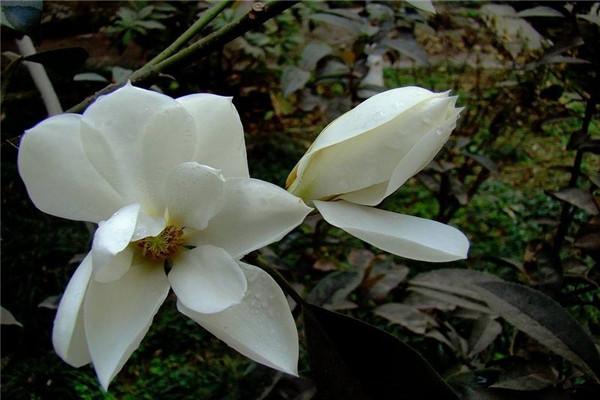
根腐
这种病叶总伴随着茎腐和炭疽病出现,多半是水肥使用不当引起的,不要以为水肥有利生长就一味浇灌,跟多植物都是被“浇死”的。这病发生的时间段比较长,在4月下到7月上之间都可能。
一旦发现就要立刻调整目前的水肥方案,及时拔掉已经生病的植株病销毁,然后再用药剂喷施其他未受害的植株。
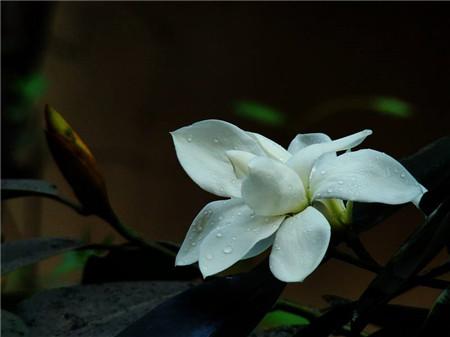
蛴螬
这种虫往往会和地老虎一起出现,4、5月份是比较“猖狂”的时间。它们经常是在地下活动的,如果处理的不好,一定会让整株都遭遇这种虫子,最后枯死。它们其实就是金龟子的幼虫,基本上是白色的,但是头部是褐色的。会在白天的时候藏在土里,晚上八九点的时候才出来做害。温度在13-15℃的时候是最喜欢出来的。
遇到这种虫,可能是因为雨天的时候没能做好排水,一旦出现了这样的虫,直接用一定剂量的敌百虫防治,可以不直接喷施,而在周边扎洞浇灌,这样做会更有效一点。

介壳虫
这小虫也是比较常见的,该虫基本上会在5-6月的时候出没,防治起来是比较困难的,比较严重的时候会重叠在一块,叶片和果实都不放过,还能导致整个枝甚至全株死亡。
平时一定要注意养护和管理,秋天的时候要及时刷掉枝干上的幼虫,如果整株已经死掉,为避免其继续传播,还要销毁死株,及时修剪通风。
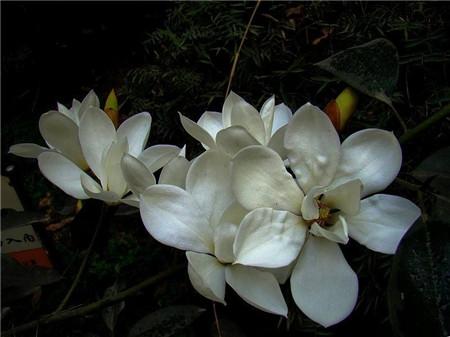
0
0





